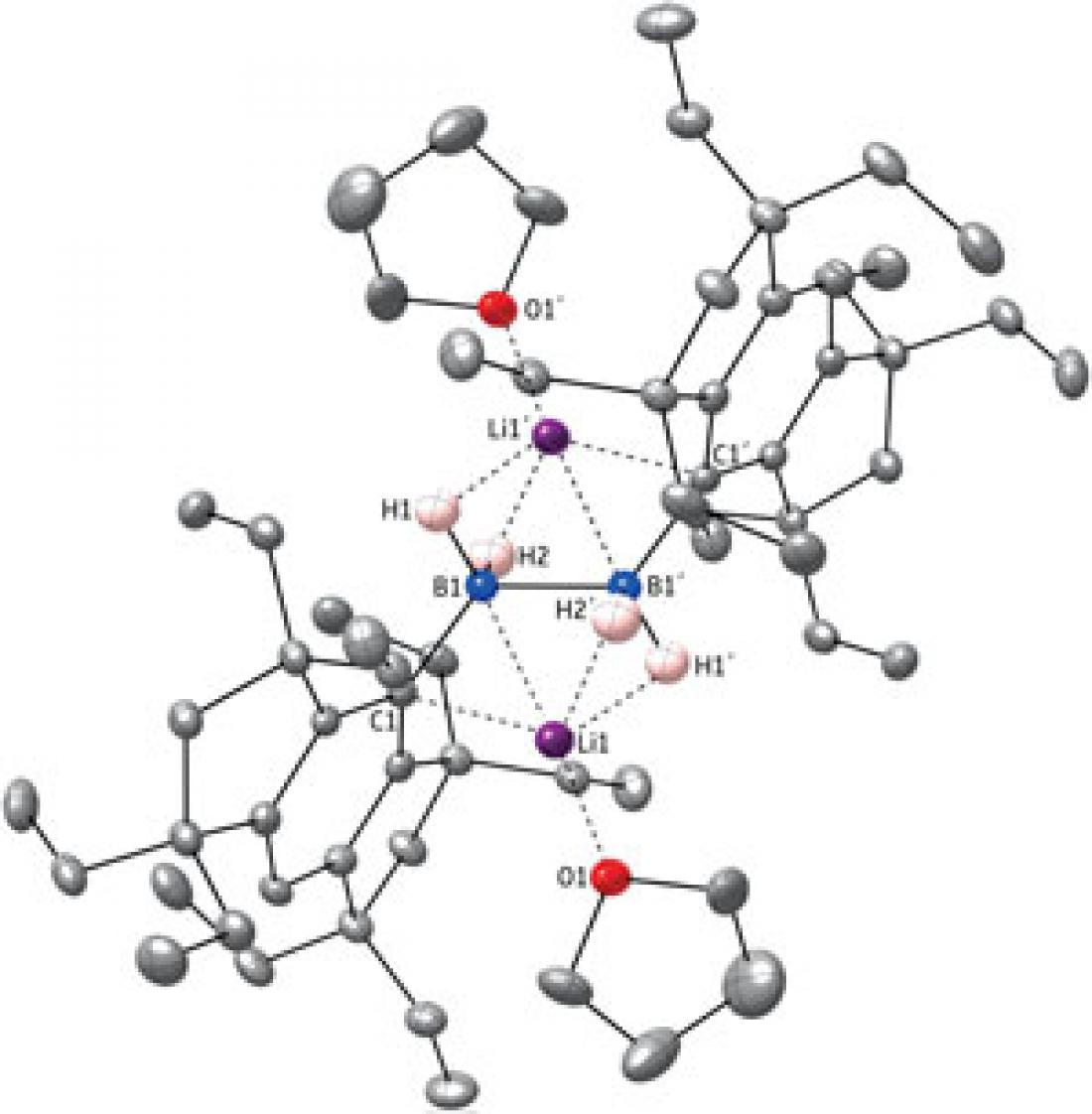In the dilithium diborane(6) dianion, bulky side-groups (grey) protect the delicate boron–boron bond (blue)
Boron-based chemical compounds rarely form simple structures. Boron is an electron-deficient element; and, as electrons are the glue that hold compounds together, this leads to some unusual bonding behavior. Using a new method developed in Japan to link two boron atoms together by a regular, single covalent bond, the element can be forced into more conventional behavior. The method was developed by a team of researchers including Yoshiaki Shoji, Tsukasa Matsuo, and Kohei Tamao at the RIKEN Advanced Science Institute, Wako.
The compound that the researchers made features two boron atoms held together by a shared pair of electrons. For other elements—carbon, for example—that would be a typical bond, but electron-poor boron tends to prefer a more complex arrangement. In the boron compound diborane (B2H6), for example, two boron atoms are bridged by hydrogen atoms, with each boron–hydrogen–boron bond sharing a single pair of electrons across three atoms rather than the usual two.
Theory has long predicted that by pumping extra electrons into a compound such as diborane, the boron–hydrogen–boron structure should break down to form a boron–boron single bond. Until now, however, all such attempts to make and isolate such a structure had failed, instead generating clusters or single boron species.
Matsuo and Tamao’s strategy for generating the boron–boron bond was to start with a borane precursor where each boron atom was fitted with a bulky side-group known as an Eind group. The researchers suspected that previous attempts probably succeeded in generating the boron–boron single bond but failed to protect that structure from quickly falling apart through over-reaction. Using the bulky side-groups, they were able to block these over-reaction processes, and successfully isolate the desired boron–boron single bond.
Having discovered a new way to make the boron–boron bond, the next step will be to assess its chemistry and reactivity, and to explore related structures, says Shoji. The bond has already proved to be relatively stable: the team has shown that if protected from air and moisture, the boron–boron compound can be stored for months at ambient temperature. It can also be converted into a three-membered ring, in which a bridging hydrogen atom is the third member, forming a molecule with potentially useful properties. “We think that the hydrogen-bridged boron–boron bond has a double-bond character,” says Matsuo. “We would like to explore the new reaction chemistry of multiply bonded boron species.”
The corresponding author for this highlight is based at the Functional Elemento-Organic Chemistry Unit, RIKEN Advanced Science Institute
Reference:
Shoji, Y., Matsuo, T., Hashizume, D, Gutmann, M.J. Fueno, H. Tanaka, K. & Tamao, K. Boron–boron σ-bond formation by two-electron reduction of a H-bridged dimer of monoborane. Journal of the American Chemical Society 133, 11058–11061 (2011)



